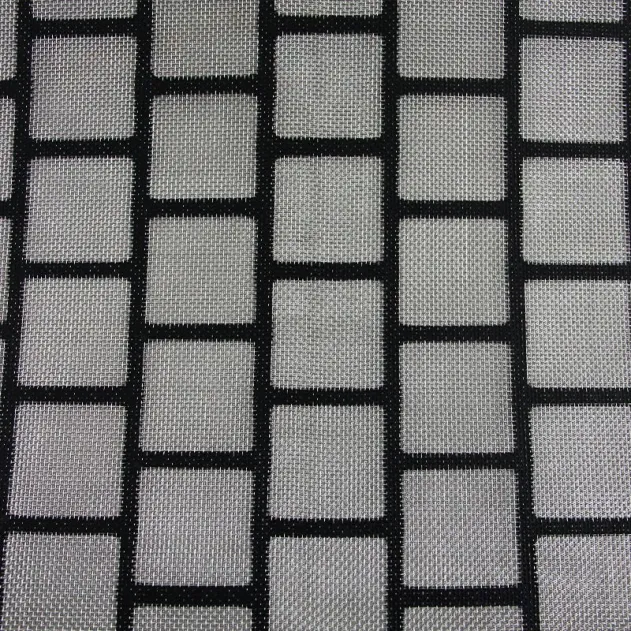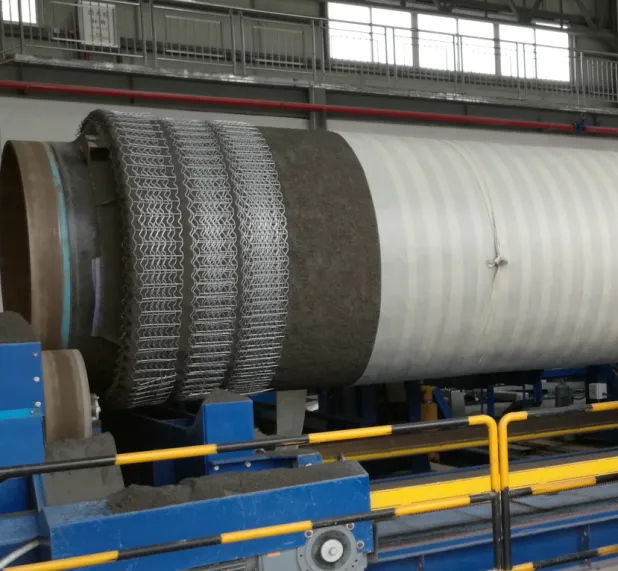- Industrial zone, South of Anping Town, Hengshui, Hebei, China.
- sales@hfpetromesh.com
- +86-18931809706
 Afrikaans
Afrikaans  Albanian
Albanian  Amharic
Amharic  Arabic
Arabic  Armenian
Armenian  Azerbaijani
Azerbaijani  Basque
Basque  Belarusian
Belarusian  Bengali
Bengali  Bosnian
Bosnian  Bulgarian
Bulgarian  Catalan
Catalan  Cebuano
Cebuano  Corsican
Corsican  Croatian
Croatian  Czech
Czech  Danish
Danish  Dutch
Dutch  English
English  Esperanto
Esperanto  Estonian
Estonian  Finnish
Finnish  French
French  Frisian
Frisian  Galician
Galician  Georgian
Georgian  German
German  Greek
Greek  Gujarati
Gujarati  Haitian Creole
Haitian Creole  hausa
hausa  hawaiian
hawaiian  Hebrew
Hebrew  Hindi
Hindi  Miao
Miao  Hungarian
Hungarian  Icelandic
Icelandic  igbo
igbo  Indonesian
Indonesian  irish
irish  Italian
Italian  Japanese
Japanese  Javanese
Javanese  Kannada
Kannada  kazakh
kazakh  Khmer
Khmer  Rwandese
Rwandese  Korean
Korean  Kurdish
Kurdish  Kyrgyz
Kyrgyz  Lao
Lao  Latin
Latin  Latvian
Latvian  Lithuanian
Lithuanian  Luxembourgish
Luxembourgish  Macedonian
Macedonian  Malgashi
Malgashi  Malay
Malay  Malayalam
Malayalam  Maltese
Maltese  Maori
Maori  Marathi
Marathi  Mongolian
Mongolian  Myanmar
Myanmar  Nepali
Nepali  Norwegian
Norwegian  Norwegian
Norwegian  Occitan
Occitan  Pashto
Pashto  Persian
Persian  Polish
Polish  Portuguese
Portuguese  Punjabi
Punjabi  Romanian
Romanian  Russian
Russian  Samoan
Samoan  Scottish Gaelic
Scottish Gaelic  Serbian
Serbian  Sesotho
Sesotho  Shona
Shona  Sindhi
Sindhi  Sinhala
Sinhala  Slovak
Slovak  Slovenian
Slovenian  Somali
Somali  Spanish
Spanish  Sundanese
Sundanese  Swahili
Swahili  Swedish
Swedish  Tagalog
Tagalog  Tajik
Tajik  Tamil
Tamil  Tatar
Tatar  Telugu
Telugu  Thai
Thai  Turkish
Turkish  Turkmen
Turkmen  Ukrainian
Ukrainian  Urdu
Urdu  Uighur
Uighur  Uzbek
Uzbek  Vietnamese
Vietnamese  Welsh
Welsh  Bantu
Bantu  Yiddish
Yiddish  Yoruba
Yoruba  Zulu
Zulu
- Afrikaans
- Albanian
- Amharic
- Arabic
- Armenian
- Azerbaijani
- Basque
- Belarusian
- Bengali
- Bosnian
- Bulgarian
- Catalan
- Cebuano
- Corsican
- Croatian
- Czech
- Danish
- Dutch
- English
- Esperanto
- Estonian
- Finnish
- French
- Frisian
- Galician
- Georgian
- German
- Greek
- Gujarati
- Haitian Creole
- hausa
- hawaiian
- Hebrew
- Hindi
- Miao
- Hungarian
- Icelandic
- igbo
- Indonesian
- irish
- Italian
- Japanese
- Javanese
- Kannada
- kazakh
- Khmer
- Rwandese
- Korean
- Kurdish
- Kyrgyz
- Lao
- Latin
- Latvian
- Lithuanian
- Luxembourgish
- Macedonian
- Malgashi
- Malay
- Malayalam
- Maltese
- Maori
- Marathi
- Mongolian
- Myanmar
- Nepali
- Norwegian
- Norwegian
- Occitan
- Pashto
- Persian
- Polish
- Portuguese
- Punjabi
- Romanian
- Russian
- Samoan
- Scottish Gaelic
- Serbian
- Sesotho
- Shona
- Sindhi
- Sinhala
- Slovak
- Slovenian
- Somali
- Spanish
- Sundanese
- Swahili
- Swedish
- Tagalog
- Tajik
- Tamil
- Tatar
- Telugu
- Thai
- Turkish
- Turkmen
- Ukrainian
- Urdu
- Uighur
- Uzbek
- Vietnamese
- Welsh
- Bantu
- Yiddish
- Yoruba
- Zulu
Jan . 25, 2025 06:09
Back to list
Steel Grating
Understanding the intricacies of platform grating specifications is essential for industries that prioritize safety, durability, and cost-effectiveness. With the myriad of materials and designs available, choosing the right grating for your platform requires a precise approach grounded in substantial expertise and trustworthy data.
Ensuring compliance with industry standards is non-negotiable. Organizations like the American National Standards Institute (ANSI) and Occupational Safety and Health Administration (OSHA) provide guidelines that influence grating selection. Adhering to these regulations not only ensures legal compliance but also fortifies the safety and reliability of the installation. Durability remains a pivotal criterion in selecting platform grating, as endurance against environmental and operational stressors dictates the longevity of the investment. This consideration encompasses both initial cost evaluations and potential long-term savings in maintenance and replacement. Transitioning to custom specifications offers businesses the opportunity to tailor solutions to their exact needs. Customization might involve specific dimensions, load ratings, or surface treatments, which can optimize the grating's performance in its intended environment. Consulting with manufacturers who have a reputable track record in delivering customized grating solutions can elevate the trustworthiness of the purchase decision. Lastly, seamless collaboration between engineers, architects, and grating manufacturers cannot be understated. This triadic partnership ensures that the specifications align meticulously with project objectives, thereby enhancing the platform's safety, efficiency, and cost-effectiveness. Navigating platform grating specifications indeed demands a fusion of experience and expertise. By prioritizing material choice, pattern configuration, compliance standards, and collaborative synergy, industries can ensure that their platform grating serves as a benchmark of safety, reliability, and value. Contributed with the latest innovations and standard guidelines, the comprehensive perspective on grating can surely lead to informed decisions unparalleled by any pre-existing analysis.


Ensuring compliance with industry standards is non-negotiable. Organizations like the American National Standards Institute (ANSI) and Occupational Safety and Health Administration (OSHA) provide guidelines that influence grating selection. Adhering to these regulations not only ensures legal compliance but also fortifies the safety and reliability of the installation. Durability remains a pivotal criterion in selecting platform grating, as endurance against environmental and operational stressors dictates the longevity of the investment. This consideration encompasses both initial cost evaluations and potential long-term savings in maintenance and replacement. Transitioning to custom specifications offers businesses the opportunity to tailor solutions to their exact needs. Customization might involve specific dimensions, load ratings, or surface treatments, which can optimize the grating's performance in its intended environment. Consulting with manufacturers who have a reputable track record in delivering customized grating solutions can elevate the trustworthiness of the purchase decision. Lastly, seamless collaboration between engineers, architects, and grating manufacturers cannot be understated. This triadic partnership ensures that the specifications align meticulously with project objectives, thereby enhancing the platform's safety, efficiency, and cost-effectiveness. Navigating platform grating specifications indeed demands a fusion of experience and expertise. By prioritizing material choice, pattern configuration, compliance standards, and collaborative synergy, industries can ensure that their platform grating serves as a benchmark of safety, reliability, and value. Contributed with the latest innovations and standard guidelines, the comprehensive perspective on grating can surely lead to informed decisions unparalleled by any pre-existing analysis.
Share
Prev:
Next:
Latest news
-
Welded Steel Bar Grating: The Rugged Industrial Flooring Solution Built for Load and LongevityNewsJun.24,2025
-
Steel Walkway Grating: Reliable, Resilient, and Built for Every StepNewsJun.24,2025
-
Shale Shaker Screen for Sale: Optimize Drilling Efficiency with Precision Screening PowerNewsJun.24,2025
-
Shaker Screen for Sale: Elevate Your Drilling Efficiency with Durable Separation SolutionsNewsJun.24,2025
-
Press Locked Steel Grating: Industrial Strength with Precision Fit for Heavy-Duty ApplicationsNewsJun.24,2025
-
Perimeter Safety Netting: The Critical Safety Upgrade for Every HelipadNewsJun.24,2025